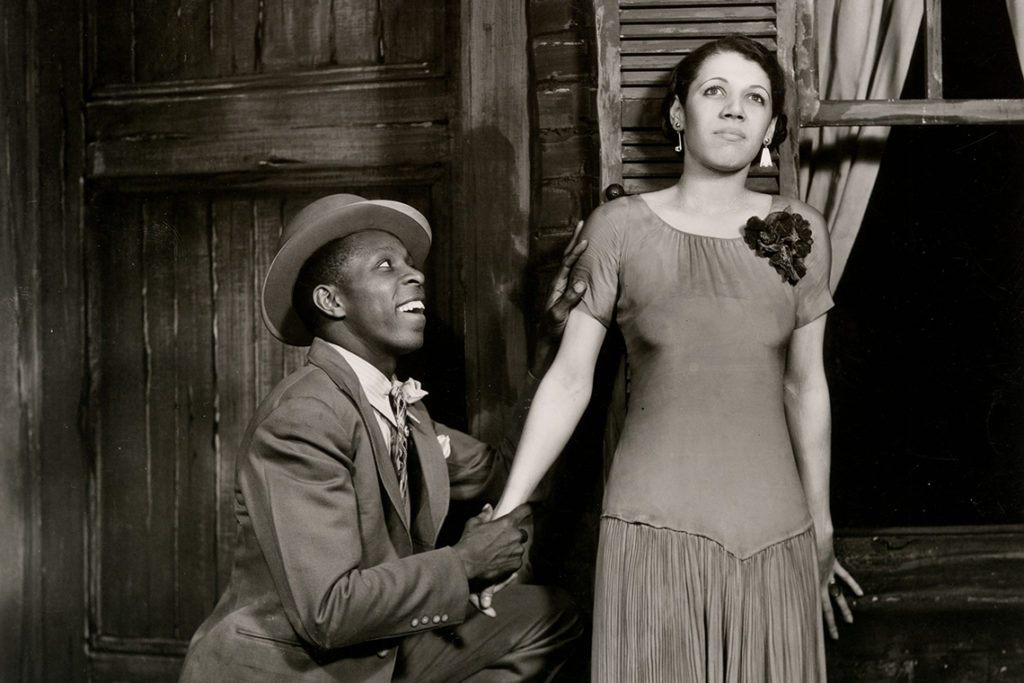George Gershwin was an internationally renowned composer most famous in the 1910s through the 1930s. Starting out as a song plugger, he eventually worked his way up the food chain as a composer, and he got so far up that, when he asked Maurice Ravel to teach him composition, Ravel said that Gershwin should teach him (1)! Much of his body of work is still performed today, such as “Rhapsody in Blue”, the opera “Porgy and Bess” with its most famous number “Summertime”, and “Fascinating Rhythm” (2).
The most prominent feature of Gershwin’s compositional style is the fusion of jazz with other classical advances in composition. Other composers of the time period, like Copland, were also fusing genres, but Gershwin was more outright about including specific techniques and harmonic progressions that were known to be used solely in jazz. “Rhapsody in Blue” is a prime example of this. Gershwin also was inspired by French composers like Ravel, Debussy and Nadia Boulanger, and fused those along with jazz and other American musical tropes (1).
While Gershwin helped bring attention to jazz as a legitimate genre amongst concertgoers (3), many Black musicians share understandably mixed feelings about how Gershwin adopted Black music conventions. One of the primary reasons for these criticisms comes in “Porgy and Bess” (here is a link to its most famous number, “Summertime”).

“Porgy and Bess” is a story about Black characters that stereotypes a lot of their actions, as the novel upon which the opera was based was written by a white man and displayed how he thought Black people lived (6). Within the plot, there is a cocaine dealer with purchases made off him, a murder, and marital infidelity, which isn’t abnormal for the plot of an opera, but in the context of minstrelsy stereotyping that Black people thought infidelity was fine, it is certainly questionable (4). In terms of cocaine, it was demonized at the time and was stereotyped as a Black drug that caused them to commit more crime, especially in the South (5). Karen Henson also argues that each character in “Porgy and Bess” represent certain common minstrel characters: Porgy resembles ‘Samba’, the cocaine dealer Sportin’ Life represents ‘Trickster’, and Bess represent ‘Jezebel’ (7).
Apart from how problematic “Porgy and Bess” is, there were positives in getting actually Black actors and featuring Black styles of music more respectfully than most in the traditionally white-dominated field of opera at the time. While helping jazz and Black music become more respected and legitimized was helpful, other people were also doing it at the same time just as well as he was who were actually Black, like Burleigh and Joplin. Efforts should be made to uplift Black voices from this time period more.
Sources:
(1) “George Gershwin.” Wikipedia. Wikimedia Foundation, November 6, 2022. https://en.wikipedia.org/wiki/George_Gershwin#Musical_style_and_influence.
(2) Paul Whiteman Orchestra. Fascinating Rhythm. Vinyl recording. New York, New York: Victor, 1924.
(3) Downes, Olin. “Gershwin Caused New Jazz Values.” The New York Times, July 12, 1937, 86 edition.
(4) Lemons, J. Stanley. “Black Stereotypes as Reflected in Popular Culture, 1880-1920.” American Quarterly 29, no. 1 (1977): 102–16. https://doi.org/10.2307/2712263.
(5) Courtwright, David T. “The Hidden Epidemic: Opiate Addiction and Cocaine Use in the South, 1860-1920.” The Journal of Southern History 49, no. 1 (1983): 57–72. https://doi.org/10.2307/2209306.
(6) “Porgy and Bess.” Wikipedia. Wikimedia Foundation, October 23, 2022. https://en.wikipedia.org/wiki/Porgy_and_Bess#Synopsis.
(7) Henson, Karen. “Black Opera, Operatic Racism and an ‘Engaged Opera Studies.’” Journal of the Royal Musical Association 146, no. 1 (2021): 219–30. doi:10.1017/rma.2020.27.
